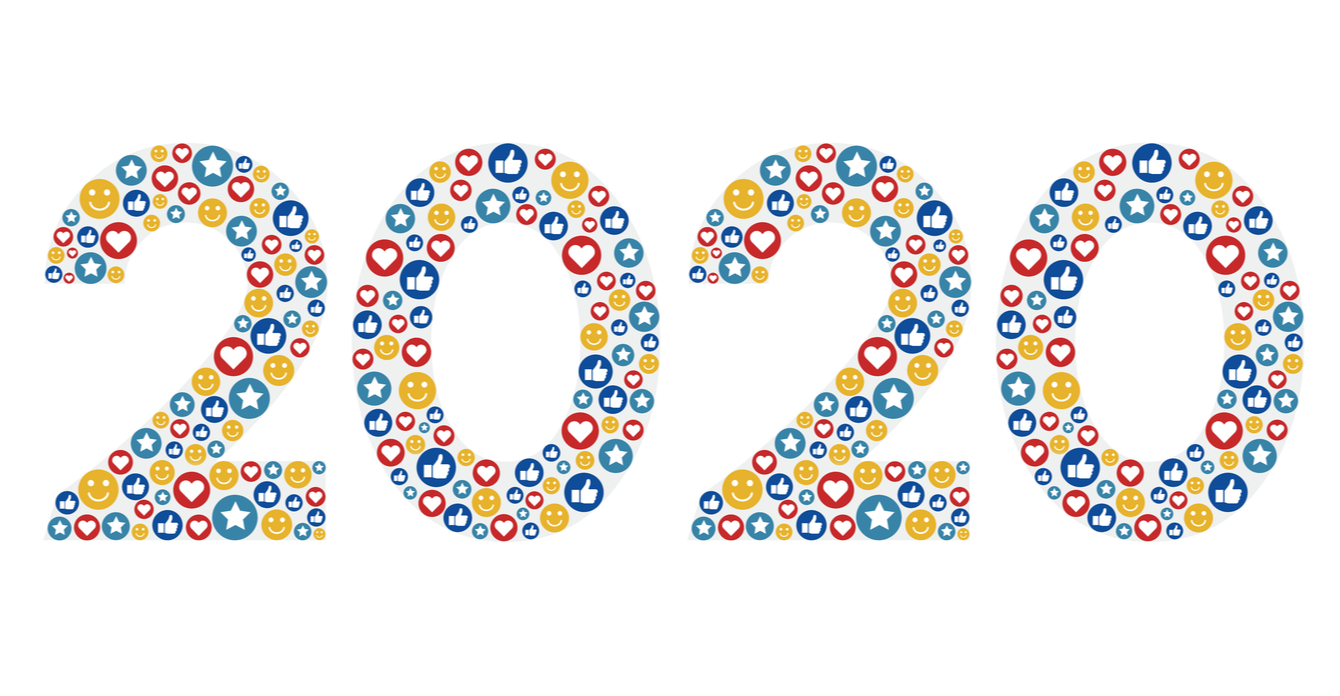With 86% of the US population using social media daily, it is more important than ever for brands to have a solid social media presence, to understand their opportunities and stay ahead of the social media curve. But with the seemingly never-ending changes to social media, doing so is not easy.
Simply creating an Instagram profile, Facebook page or YouTube channel isn’t enough. Platforms evolve, habits change, and new platforms are created. All of these changes affect how people use and react to social media marketing—and how brands are able to reach their target audience.
So, what’s trending for 2020?

- The rise of micro-influencers and nano-influencers
Now more than ever, a successful influencer marketing campaign doesn’t depend on followers alone. As brands seek to engage audiences on a more personal level, we’re going to see increasing relationships with micro-influencers (those with 10K–99K followers) and even nano-influencers (who have between 1K and 9K followers). These influencers—particularly the “regular Joe” nano-influencers—provide the authenticity mega influencers can’t with higher engagement rates (at a far more affordable cost). - Video
Short- and long-form videos are the future of social content and will continue to grow and dominate all other types of content. - Images are (almost) everything
By 2020, more than half of all searches will be done through voice recognition systems or graphics. People are getting used to talking to Google Home and Amazon devices every morning, while website layouts have been optimized in ways that allow image searching in just seconds.With the rise of Instagram and Snapchat—and smartphones giving virtually everyone any time access to photos and videos—visual-based content has increased in usage and will continue to do so in the year ahead.
- VR & AR
We will see more and more practical marketing uses for both virtual reality (VR) and augmented reality (AR) this year. For example, Snapchat has been creating geo-targeted marketing campaigns to influence customers to visit certain local stores or attend specific local events. Gen Z will be the leaders of this revolution, and many social media messaging platforms will use AR to boost advertising revenue. - Social media as customer service
Over 28% of consumers have used social media to communicate with a company in the last year, a trend that is likely to increase. Why? More than 30% of consumers say it’s convenient and 23% believe it is a good way to get 24-hour service. Enter social media as customer service: Brands need to respond to customer demands—and that means doing so how, when and where the customer wants.Doing so via social media has its rewards. Answering a customer complaint can increase customer advocacy by as much as 25%. However, failing to respond to a complaint can decrease it by 50%. To make sure your brand doesn’t fall short, put a social media customer service strategy in place—and train your staff to make sure they follow it.
- Ephemeral content
Videos and images that only display for a short period of time—think Instagram Stories or Snapchat—ephemeral content taps into people’s desire to know what is happening and constantly check their social media channels so they don’t miss out on the latest post from a friend or celebrity. If you make it a habit to continually publish engaging ephemeral content, you will train your followers to visit your social media channels on a regular basis so they don’t miss your latest either.
This is just the tip of the iceberg. I could go on and on. The point is this: The world of social media is always evolving. To stay ahead of the competition and build your brand’s social profile, you need to keep up with trends.
What trends will your brand embrace in the New Year?










